1. Riding in the Back of a Pickup Truck
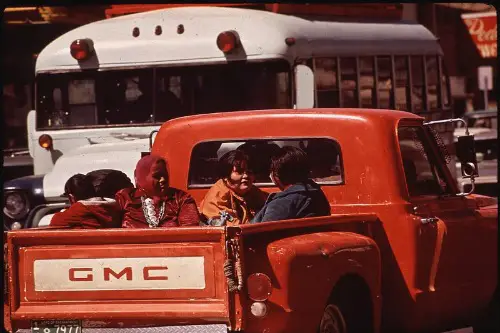
Not too long ago, piling into the back of a pickup truck with a bunch of friends was just part of childhood fun, especially in rural areas. Whether it was a trip to the lake, a ride around town, or just goofing off on a dirt road, kids thought nothing of it. Today, though, most states have laws against it due to the obvious safety risks—there’s zero protection in case of an accident. What used to be a casual joyride is now considered reckless and dangerous.
Many parents who grew up doing this would never let their kids try it today, and for good reason, Lanie Jones from The Los Angeles Times reports. If a truck hits a bump, turns too sharply, or stops suddenly, passengers in the truck bed can be thrown out. Even at slow speeds, an unexpected jolt can lead to serious injuries. What once seemed like harmless fun is now recognized as a major safety hazard.
2. Playing with Lawn Darts
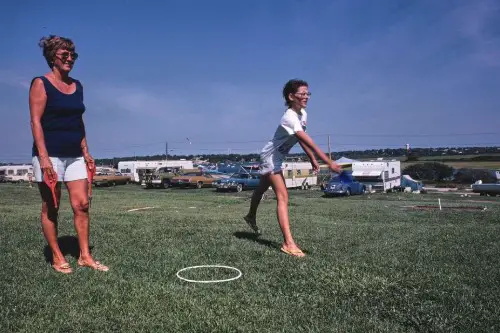
Lawn darts, or “Jarts,” were a staple of backyard games in the ’70s and ’80s, with kids hurling heavy, metal-tipped darts toward plastic rings on the grass. The problem? Those sharp darts had a bad habit of hitting things they weren’t supposed to—like people’s heads. After numerous injuries and even a few deaths, they were officially banned in the U.S. in 1988, according to Matt Soniak from Mental Floss. It’s wild to think that something so obviously dangerous was once marketed as a fun family activity.
Today, you can still find “safe” versions of lawn darts, but they’re made with rounded plastic tips instead of metal spikes. But let’s be real—kids don’t find the new versions nearly as exciting. The original game was a mix of skill, suspense, and a little bit of danger, which is probably why it was so popular. While it may be a nostalgic memory for many, it’s easy to see why it had to go.
3. Drinking from the Garden Hose
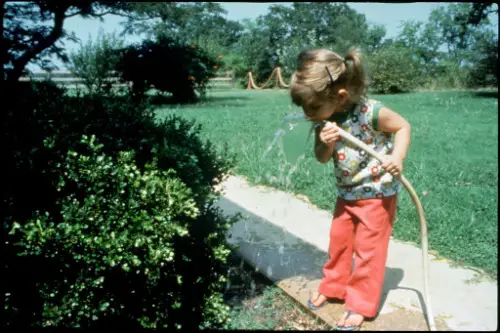
For generations, kids playing outside on a hot summer day would quench their thirst with a quick gulp from the garden hose. It was easier than going inside, and no one thought twice about it. Now, we know that many garden hoses contain harmful chemicals like lead and BPA, which can leach into the water. Add in the bacteria and dirt that build up inside the hose, and it’s not exactly the refreshing drink we once believed it to be, according to Dave Overlund from 96.7 The River.
Most parents today insist on filtered tap water or bottled drinks instead. While it might seem like an overreaction, the risks are real—some hoses even carry warning labels advising against drinking from them. The days of carefree backyard hydration are gone, replaced by a much more cautious approach. It’s just one of those childhood traditions that science has taken away.
4. Playing on Metal Playgrounds
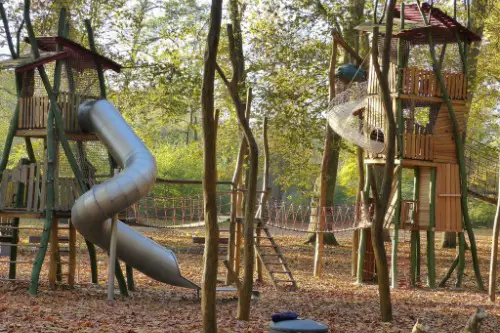
If you grew up in the ‘80s or earlier, you probably remember playgrounds made entirely of scalding-hot metal. Slides, monkey bars, and jungle gyms were often built from steel and left in the blazing sun, turning them into accidental branding irons. Falling off these structures onto rock-hard dirt or concrete was just part of the experience. Today, modern playgrounds use plastic, rubber padding, and softer surfaces to prevent injuries.
Back then, no one really questioned the risk of second-degree burns or broken bones. Kids would learn the hard way to test a slide’s temperature before going down. While those old playgrounds were undeniably more exciting, they were also accidents waiting to happen. Now, safety-first designs have taken over, and while they might not be as thrilling, they definitely lead to fewer ER visits.
5. Walking to School Alone
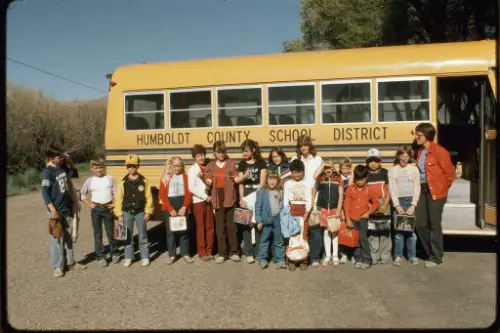
There was a time when kids as young as five or six walked to school alone or with a group of friends, even in big cities. Parents trusted that their children would safely make it to class, and no one batted an eye. Nowadays, the idea of a child walking to school unsupervised is enough to make most parents panic. Concerns about traffic accidents, abductions, and general safety have made solo walks to school almost unheard of.
Some states even have laws that can get parents in trouble for letting their kids walk alone. Helicopter parenting and 24/7 news cycles have amplified fears, even though crime rates in many areas are lower than they were in past decades. Many schools now encourage carpools, buses, or parental supervision for every trip. The freedom kids once had is now seen as a major risk.
6. Climbing Trees Without Supervision
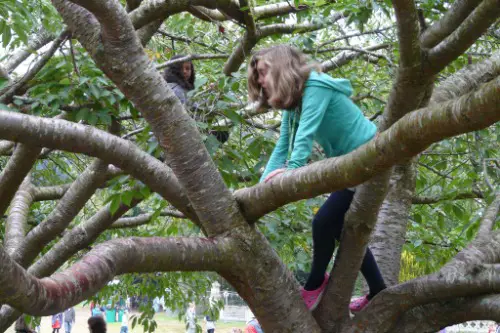
Climbing trees was once an essential part of childhood—kids would race to the top, build tree forts, or just hang from branches without a second thought. Scraped knees, bruises, and the occasional broken arm were considered badges of honor. Today, many schools and parents discourage tree climbing due to liability concerns and the fear of serious injuries. Some schools have even banned it outright, arguing that it’s too dangerous.
While it’s understandable to want to keep kids safe, there’s also a case to be made for letting them take calculated risks. Climbing teaches balance, coordination, and problem-solving skills that can’t be learned any other way. Unfortunately, in today’s overly cautious world, tree climbing is just another casualty of safety-first parenting, according to Dr. Leonard Sax from Psychology Today. What was once a rite of passage is now seen as reckless.
7. Playing Dodgeball in School
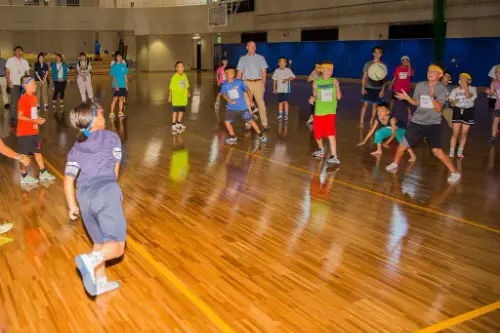
For decades, dodgeball was a beloved recess and gym class activity, where kids pelted each other with rubber balls in a test of speed and agility. But over the years, concerns about bullying, injuries, and even emotional distress have led many schools to ban it. Some argue that the game encourages aggression and leaves less athletic kids feeling humiliated. Others point out the risk of concussions, broken glasses, or even serious eye injuries.
Today, many schools have replaced dodgeball with less intense games that focus on cooperation instead of competition. While some parents think banning dodgeball is an overreaction, others see it as a necessary step to protect kids. The truth is, those rubber balls could pack a serious punch, especially when thrown at full speed. Love it or hate it, dodgeball has largely disappeared from American schools.
8. Riding Bikes Without Helmets
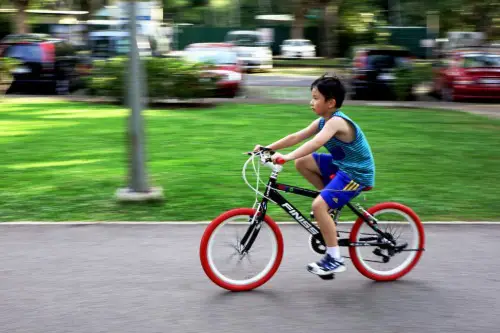
Once upon a time, kids rode their bikes everywhere—without helmets, knee pads, or any protective gear whatsoever. Speeding down hills, popping wheelies, and taking spills were just part of the fun. Today, helmet laws exist in many states, and parents are much more cautious about letting their kids ride unprotected. Studies have shown that helmets drastically reduce head injuries, making them a no-brainer for modern families.
While wearing a helmet is obviously a good idea, many older generations still remember the thrill of the wind in their hair. Some argue that kids today are missing out on the carefree spirit of biking. Others say they’re just lucky to avoid the head injuries that were all too common in the past. Either way, riding helmet-free has gone from normal to reckless in just a few decades.
9. Using Lead-Based Paint
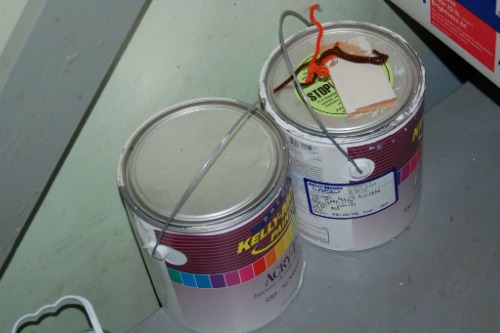
In the past, lead-based paint was widely used in homes, toys, and even playground equipment, with no one giving much thought to its dangers. Lead is a potent neurotoxin, especially harmful to young children, yet it wasn’t until the late 20th century that we fully understood its effects. The use of lead paint was finally banned for residential use in 1978, but many older homes still contain it. Today, any exposure to lead paint is a major concern, and even a small amount can cause lasting health problems.
Back then, kids would play on painted surfaces without anyone thinking twice about it. Now, parents are advised to carefully check for lead in older homes or get rid of old toys that might contain it. What was once standard practice is now seen as hazardous, and the consequences of exposure are taken very seriously. We’ve come a long way in understanding the risks of materials like lead, which were once commonplace.
10. Playing with Fireworks

Fourth of July celebrations used to involve kids lighting their own sparklers and fireworks without a second thought, under the watchful eye of adults. The thrill of holding a sparkler or lighting a firecracker was a summer tradition for many families. Today, though, the risks of serious burns, eye injuries, and fires have caused many states to crack down on fireworks. Many cities have also made it illegal for anyone except licensed professionals to handle fireworks.
While it’s true that fireworks can be fun, the danger they pose, especially in the hands of children, has led to stricter regulations. In some places, even sparklers, which seem harmless, are banned due to the risk of burns. There’s also the danger of fireworks malfunctioning, causing much larger accidents. What was once an annual tradition is now often relegated to the professionals.
11. Swimming in Open Water Without a Lifeguard
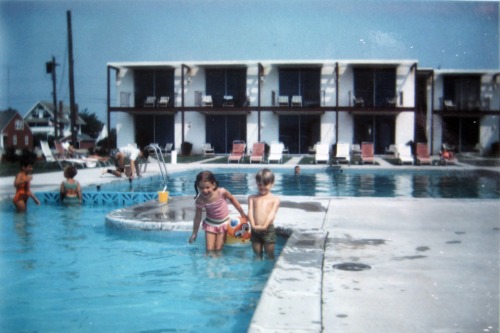
Back in the day, it wasn’t unusual for kids to swim in lakes, rivers, and ponds without lifeguards present. Whether it was a neighborhood pool, a local creek, or a hidden pond, swimming felt like an essential part of summer. Now, most public swimming areas are monitored closely for safety, and open water swimming without supervision is considered risky. Things like strong currents, hidden underwater obstacles, and sudden weather changes have made swimming in unmonitored locations more dangerous.
In some areas, it’s illegal to swim in certain bodies of water without a lifeguard on duty, and for good reason. Tragically, there are still too many drownings each year in open water due to lack of supervision. Many communities have responded by closing off swimming areas or requiring more safety measures. What was once a carefree activity now carries with it significant safety risks.
12. Shooting BB Guns

BB guns, once a rite of passage for many young boys (and sometimes girls), were a staple of childhood outdoor activities. Whether it was shooting cans in the backyard or pretending to hunt like your favorite Western hero, BB guns were everywhere. Today, however, the idea of kids running around with guns—no matter how small or non-lethal—is a hot-button issue. Increased concerns over gun safety and the risks of misusing BB guns have led many parents and communities to ban them outright.
Many schools now have strict no-weapons policies that even extend to BB guns, and some states require gun safety courses before young people can legally own one. While it’s true that BB guns aren’t technically firearms, they can still cause serious harm if used improperly. Accidents have resulted in eye injuries or, in some tragic cases, even death. What was once considered a harmless part of childhood is now viewed as a safety hazard that requires careful supervision or even restriction.
13. Playing with Pocket Knives

Back in the day, kids would often be given small pocket knives to carry around for tasks like whittling, opening packages, or just as a tool for the outdoors. These knives were seen as rites of passage, teaching responsibility and basic tool-handling skills. In today’s world, though, giving a child a pocket knife is seen as potentially dangerous, with more schools and communities banning them. The risk of accidents, particularly when children are unsupervised, has led to a shift in how we view these tools.
Modern-day parents are more cautious, and rightfully so—accidents with knives can cause severe injuries. While some may still pass down these family heirlooms as part of outdoor traditions, there’s a growing awareness of how quickly a small slip can lead to disaster. What once seemed like a practical, everyday item has now become an unnecessary hazard for many families. In short, the tradition of carrying a pocket knife has largely gone out of style.
14. Playing with Fire in the Backyard
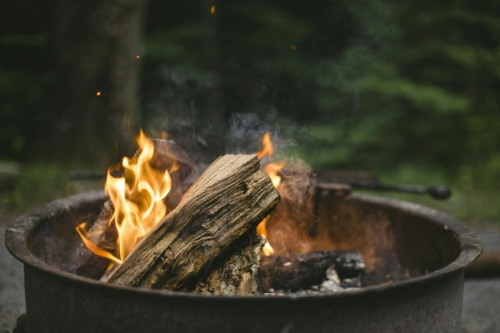
Building small backyard bonfires or setting off tiny “campfires” was once a favorite childhood pastime, especially on cool evenings or during family camping trips. Kids would gather around, roast marshmallows, and tell stories under the stars with a small fire they’d built themselves. But in the age of wildfires, air pollution, and heightened awareness of fire safety, these backyard fires are increasingly considered dangerous. Many states have restrictions on open flames due to the risk of starting a fire that could easily spread.
While fire pits and outdoor heating elements have become more controlled and regulated, the impromptu backyard fire is much less common today. Authorities now emphasize proper fire containment, extinguishing methods, and even permits in some cases. The threat of wildfire damage, especially in dry or wooded areas, means that what was once a carefree way to spend an evening is now treated with much more caution. What used to be a common childhood activity now raises red flags for parents and communities alike.


